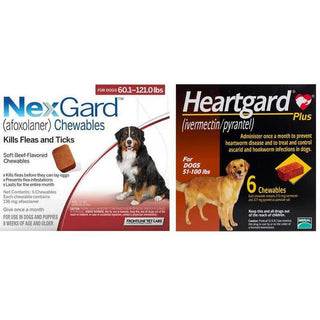
While the idea of worms might not evoke enthusiasm unless you're an avid parasitologist or perhaps possess avian characteristics, the concept becomes decidedly less charming and even worrisome when considering your canine companion could be infested with these parasites. Hence, it is crucial to understand how dogs contract worms, recognize the signs that indicate their presence, and know how to prevent such infestations.
Worm Infestations In Dogs And Their Types
Dogs are susceptible to worm infestations regardless of age, breed, or size. The worm's impact on the dog depends on factors such as age, overall health, and the worm's load (i.e., the total number of worms within the dog's system). Additionally, some of these parasites are zoonotic, implying that they can transfer from dogs to humans.
A variety of worms can invade a dog's system, including:

Roundworms: The most prevalent form of worms in dogs, particularly puppies, are roundworms. These parasites reside freely in the dog's intestinal tract. Humans, too, can contract roundworms, usually by consuming eggs found in infected soil.
Hookworms: Hookworms, parasites that measure from 1/2 inch to an inch in length, cling to the small intestine's lining, feeding off the host's blood. Humans can contract this parasite by consuming the larvae or barefoot contact with infested soil.
Whipworms: Whipworms are about 1/2 inch long and dwell in the large intestine, causing inflammation and irritation. Their eggs can persist in the environment for years as they resist heat and desiccation. While the chances of humans getting whipworms are slim, it is not entirely out of the question.
Tapeworms: Adult tapeworms can grow as long as eleven inches. They are flat, segmented parasites. Each segment, known as a proglottid, is approximately 1/2 inch long and 1/8 inch wide, resembling a grain of rice. When passed in the dog's feces, these segments can break open upon drying and release up to 20 fertilized eggs into the surroundings. The parasites attach themselves to the small intestine's wall using hook-like mouthparts. The risk of humans contracting tapeworms from their dogs is relatively low.
Heartworms represent another form of worm infestation, although they do not inhabit the intestinal tract. Instead, these adult heartworms reside in the dog's heart and are transmitted through mosquito bites. Many heartworm prevention treatments also offer protection against specific types of intestinal worms.
Treatment For Worms In Dogs
Roundworms And Hookworms
To reduce the worm load and associated risks to puppies, the mother dog should ideally be dewormed using a suitable product before breeding or during pregnancy before the puppies' birth.
It's advisable to deworm puppies every fortnight, from two weeks old until they reach eight to ten weeks. A fecal test should be conducted around the 10 to 12-week mark to ascertain if additional treatments are required. It's recommended to initiate a broad-spectrum preventive treatment when the puppies are around eight weeks old.
For adult dogs, two doses of a dewormer, spaced three weeks apart, are generally administered to treat roundworms. After treatment, it's good practice to have a follow-up fecal examination.
Your vet will be able to advise on the most suitable deworming schedule.
Maintaining a regular monthly preventive routine that targets roundworms can effectively thwart reinfection in your dog.
Whipworms
Numerous medications are available to combat whipworms, but each requires repeated treatment. Whipworm eggs can survive in the environment for an extended period, so the reinfection rate is relatively high.
The preliminary treatment regimen for whipworms typically spans three months. Administering another round of treatment three to four months after the last one is recommended. Regular fecal examinations with your veterinarian should also be maintained to monitor the situation.
Tapeworms
Tapeworm treatment involves a distinct medication compared to those used for other common worms. If your puppy or dog has fleas or may have consumed a bird or small mammal, treating them for tapeworms is advisable. If fleas are present, another round of treatment is typically suggested approximately three to four weeks after all the fleas have been eradicated.
Prevention Of Worm Infestations In Dogs
The most effective method of managing worm infestations in dogs is through preemptive measures. To inhibit the development of worms in both puppies and adult dogs, it is essential to:
- Maintain a clean environment by promptly removing dog feces, treating your yard for fleas, ticks, and mosquitoes, and consistently grooming your dog.
- Ensure timely deworming for pregnant dogs.
- Administer deworming treatment to puppies.
- Implement round-the-year preventive measures, beginning when puppies are eight weeks old and weighing at least 2.8 lbs.
- Arrange for multiple fecal examinations during your puppy's first year.
- Provide continual protection against fleas and ticks throughout the year.
- Perform regular worm tests at least once a year, although more frequent testing might be required depending on the dog's lifestyle.






